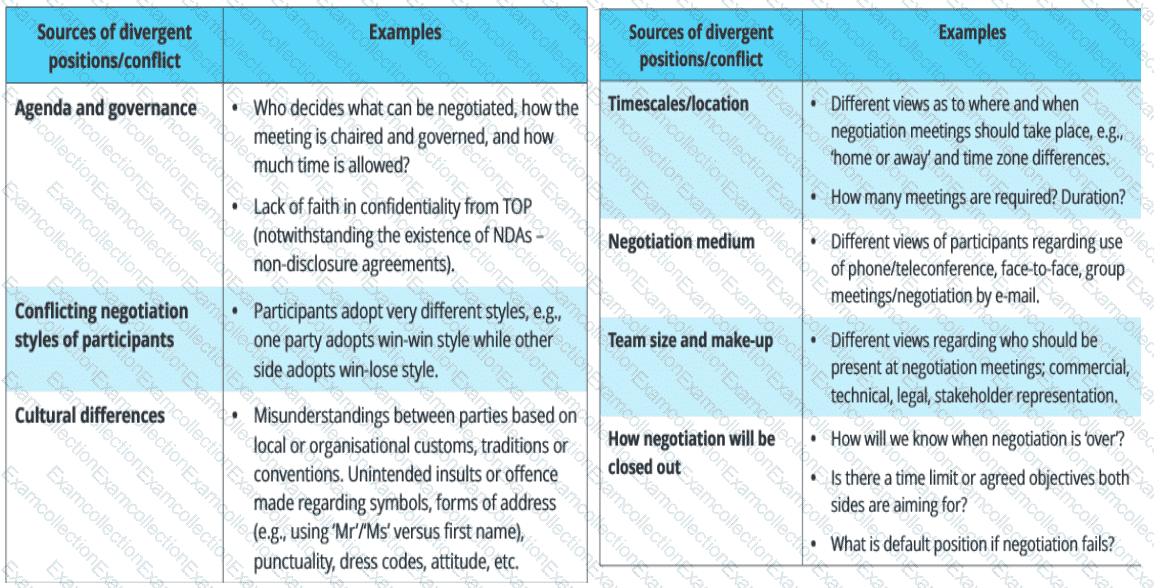CIPS L4M5 - Commercial Negotiation
Representatives from South African Department of Health is negotiating the price of hospital drugs with US pharmaceutical companies. Which of the following are most likely to be macro factors that influence the outcomes of the negotiation? Select TWO that apply.
Which of the following types of questions are likely to be the most effective to check facts in negotiations?
Which of the following are most likely to be sources of conflict that can emerge from the process of commercial negotiations? Select TWO that apply.
At the first stage of CIPS Procurement and Supply Cycle (Understand need), which of the following is the most important duty of procurement professional?
Which of the following roles would support negotiations with an external supplier when planning a negotiation for a low-value, routine purchase? Select TWO that apply.
Neville is a senior procurement specialist in a automaker. He has good relationship with his team mates and other departments because of his amazing purchasing skills and kindness. Which of the following sources of power is Neville likely to possess?
Maria is a professional services category buyer within the National Health Service. Due to severe financial budget cutbacks the National Health Service is facing, the procurement team has been tasked with achieving cost savings so that funding available can be spent on patient care. Maria plans to achieve savings with one of her collaborative suppliers. Which negotiation approach should she undertake?
Which of the following are most likely to be macro factors that may influence the balance of power in commercial negotiation? Select THREE that apply.
Commercial negotiation ends at the award of a contract. Is this statement true?
Commercial negotiations on prices cover a range of aspects including pricing arrangements. A buyer may negotiate for a 'fixed price agreement'. Why is a fixed price agreement advantageous to the buyer?



 Table Description automatically generated
Table Description automatically generated